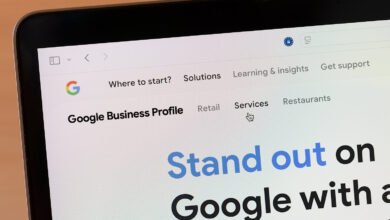Google Ads Audience Builder: A Complete Guide

▼ Summary
– Audience Builder is Google Ads’ new workflow for audience targeting in Demand Gen and Video campaigns, and for audience signals in Performance Max campaigns.
– Unlike the old workflow, Audience Builder allows only one audience per ad group (or signal per asset group) but supports multiple segments within it, while dropping combined segments and certain exclusions.
– Audience Builder offers unique features per campaign type, like Lookalike segments in Demand Gen, custom interests in Video/PMax, and search themes in PMax (outside Audience Builder).
– Audience Builder functions differently across campaigns: as strict targeting in Demand Gen, optional targeting in Video, and signals-only in PMax, with varying expansion options.
– Google may expand Audience Builder to Display, Search, and Shopping campaigns in the future, signaling a shift in its audience management approach.
Google Ads Audience Builder represents a significant shift in how marketers approach audience targeting, offering new capabilities for Demand Gen, Video, and Performance Max campaigns. This revamped interface introduces both workflow changes and functional differences that advertisers need to understand to maximize their campaign performance.
The updated system consolidates audience management into a single streamlined process, though with some notable limitations compared to previous methods. Currently available for select campaign types, this tool may signal broader changes coming to Google’s advertising platform.
Understanding Audience Builder’s Core Functionality
This rebuilt interface serves as the central hub for creating, modifying, and applying audience segments across compatible campaign types. While currently limited to Demand Gen and Video campaigns for targeting and Performance Max for audience signals, its introduction suggests Google’s direction for future audience management tools.
Key differences from previous workflows include:
- Single audience per ad group in Demand Gen/Video campaigns
- No support for combined segments using AND relationships
- Restricted exclusion capabilities (only remarketing lists can be excluded)
- Campaign-specific variations in functionality
Practical Applications Across Campaign Types
The way audiences function varies significantly depending on campaign format:
Demand Gen campaigns exclusively use Audience Builder for targeting, with optimized targeting converting these into signals rather than hard targets. Video campaigns offer more flexibility, allowing combinations with content targeting methods. Performance Max treats these audiences purely as signals to guide the algorithm’s decisions.
Future Developments and Recommendations
While currently limited to three campaign types, the advertising community anticipates Google will expand Audience Builder to other formats like Search and Shopping. The platform’s evolution suggests this represents Google’s preferred approach to audience management moving forward.
Marketers should familiarize themselves with these changes now to stay ahead of potential broader implementation. The inability to layer audiences with AND relationships may require strategic adjustments, while the campaign-specific quirks demand careful attention during setup.
(Source: Search Engine Land)





